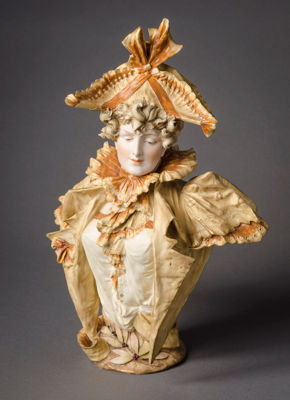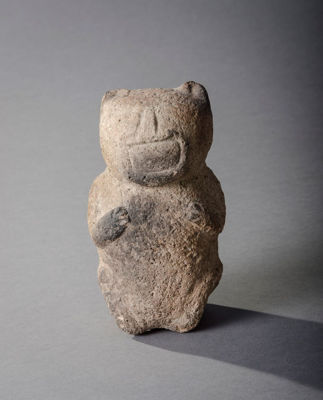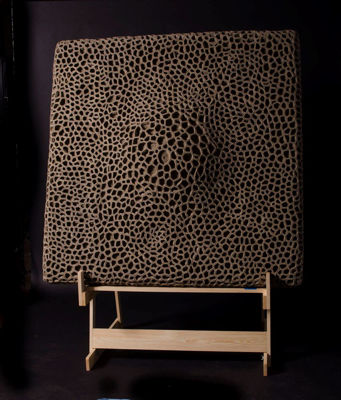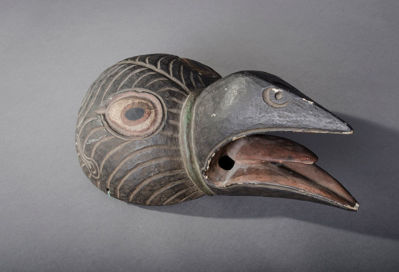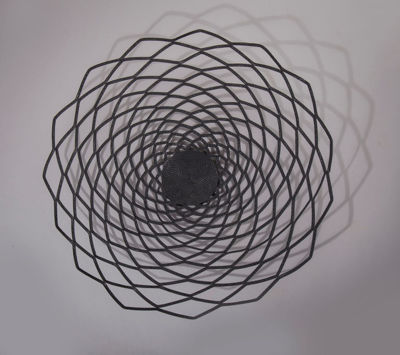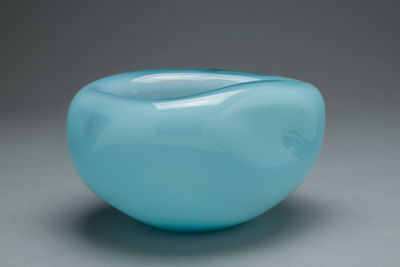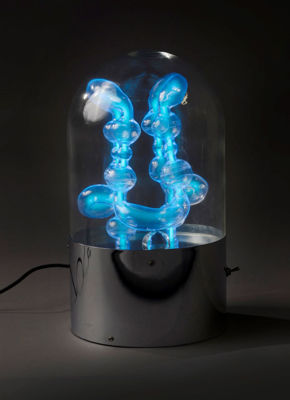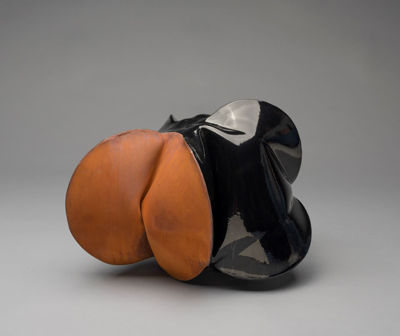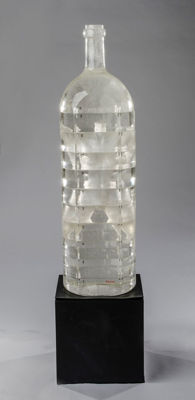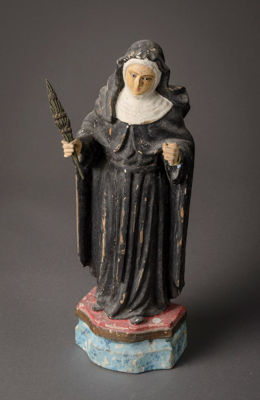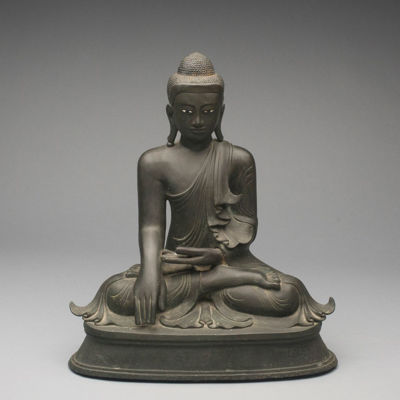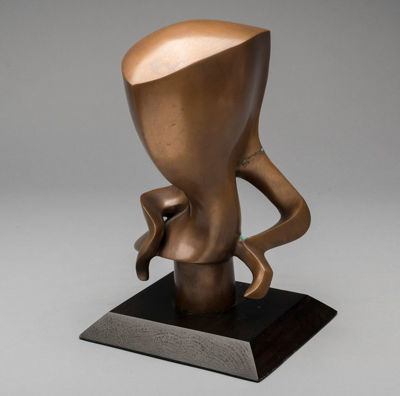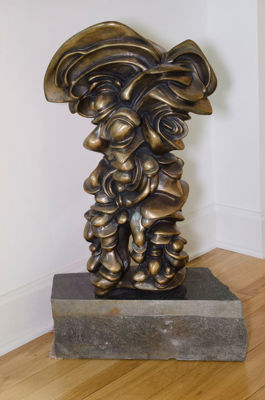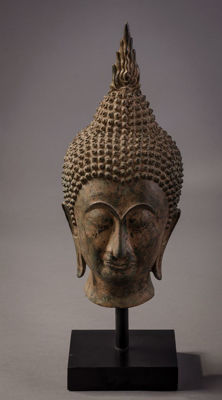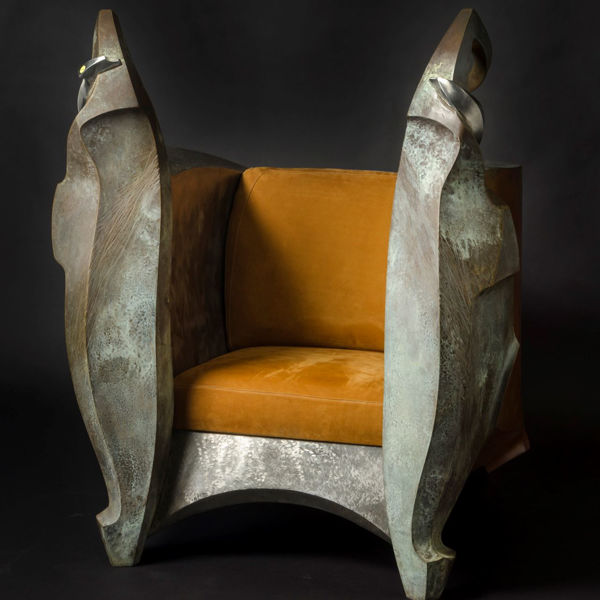Sculpture
Title: After Augustus of the "Prima Porta" Bust
Italian Marble Bust, third quarter 19th century, after the antique, Augustus of the "Prima Porta".
Title: Alabaster Bust of a Maiden
After Giuseppe Bessi (Italian, 1857-1922) Alabaster Bust of a Maiden, the half-length bust modeled with arms crossed, inscribed signature, ht. 19 1/2; set atop a white veined dark green columnar pedestal with octagonal foot, ht. 43 3/4 in. Angular cracks through her forehead and through her nose and mouth; pedestal with several chips to top edge and along base.
Title: Amphora Bust
Amphora bust of a lady, Austria, c.1900; Partially obscured blue Turn Wien mark; 16 1/2" x 12" x 6 1/2"
Title: Boll Buggy Black
The polychromed structures of Thomas’ work suggest mutable origin and material, the metal seemingly crushed or formed from other recognisable objects at various viewpoints — the uncoated and corroding steel bursting from its gleaming, chrome body. Inspired by the form of the cotton boll, a seed pod from which the fibre is harvested, Thomas slowly opens a bridge between agriculture, vegetable, and industrial mechanism — exploring the dark history and mechanical strain of the plant (notoriously one of the most resource-dependent crops, a problem classically solved by throwing slavery at the equation) versus its beauty and versatility.






